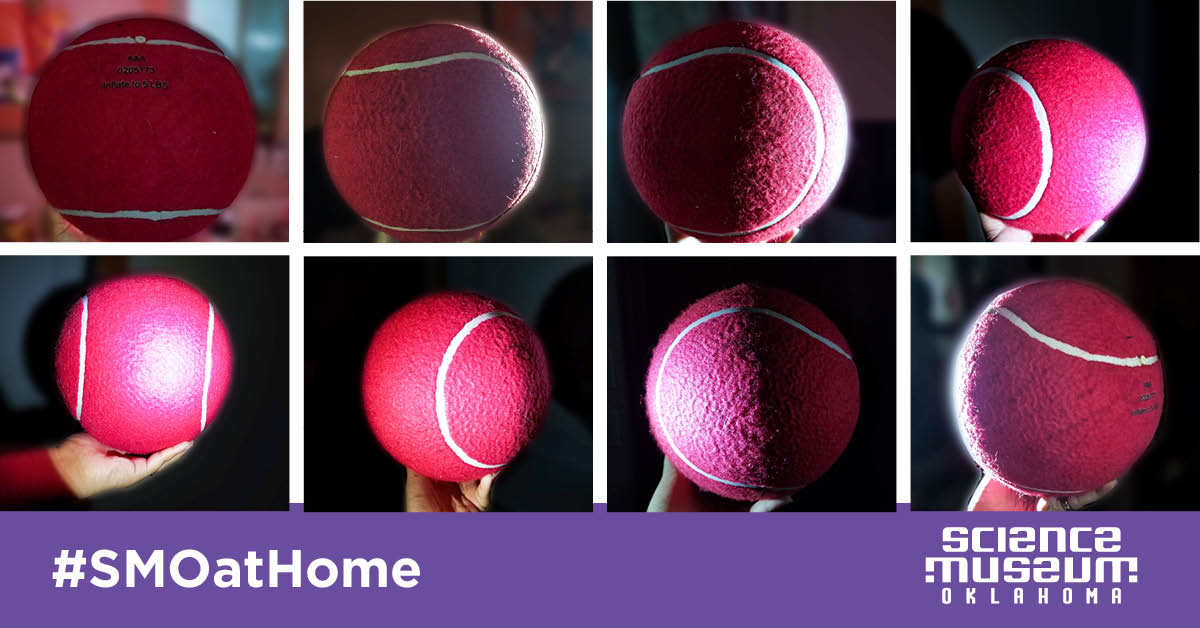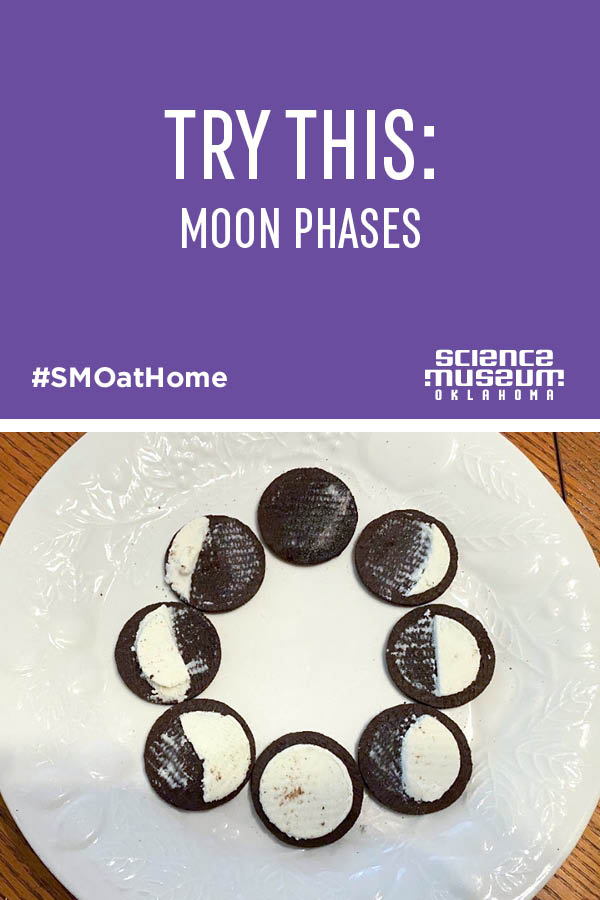Try This: See the Moon Phases
The moonlight we see on Earth is sunlight reflected off the Moon's surface. The amount of our Moon we see changes over the month — in eight distinct lunar phases — because the Moon orbits Earth and Earth orbits the Sun. Everything is moving! In this #SMOatHome we have two ways to explore the phases of the Moon, and one way is a lot more delicious than the other.
For the first method, we'll use a ball:

Here’s what you need:
- A sphere, like a basketball
- A steady, bright source of light, like a flashlight
- A dark room
Safety first: Don’t look directly into the bright light source! This can be damaging to your eyes. Make sure you clear any obstacles in the room. You don’t want to trip in the dark.
Here’s what to do:
1. Put your flashlight or other source of light (like the light on a phone) on a steady surface like a table or shel so that the light is pointing out toward the room. The light source represents the Sun.

2. Turn off the lights.
3. Begin by taking your sphere and standing in front of your light source. Face the light source (but don’t look directly at it), and hold the sphere in front of your face. This is the New Moon.

At this phase, the Moon is not visible to you (the viewer on Earth), because the Moon is between the Earth and the Sun. The Moon is cast in shadow.
4. Keep your hand extended and walk counterclockwise about 45 degrees, just a few steps to your right. Keep your eyes on the sphere and you’ll see the next phase called a Waxing Crescent Moon.

You should see the right-hand edge of the sphere illuminated as a crescent. The crescent starts out thin and gets bigger as the Moon moves farther away from the Sun (as you keep walking right). The Moon is waxing because we are beginning to see more of its surface.
5. Keep walking until you are 90 degrees from your original position. Your sphere should be illuminated in half. This is the First Quarter Moon.

6. Keep turning. Soon you’ll reach a phase of the sphere called the Waxing Gibbous Moon.

There will be a slim dark crescent on the left side of your sphere, and more of your sphere is exposed in the light. Remember, this is why we call it waxing, because we’re seeing more of the surface.
7. Keep turning until your sphere is opposite to the Sun. Because you, the viewer on Earth, will be in the middle of the Moon and the Sun, you may need to duck down a little or lift your sphere so that you can see it. This is where you will see the Full Moon. If your head blocks the light, you’ve simulated a lunar eclipse!

8. Keep turning around the sphere, and you’ll see less of your sphere being illuminated. This is called the Waning Gibbous Moon.

As we begin to see less of the Moon’s surface, we call these phases the waning phases.
9. Keep turning, and you’ll reach a stage similar to the First Quarter Moon. However, this phase is called the Last Quarter Moon.

10. As you keep turning, you will reach the Waning Crescent Moon phase. What little can be seen of the Moon’s surface is a slim crescent. Again, it is called waning, because we see less of the Moon’s surface.

11. As you keep turning, you’ll find yourself in the position where you started before, the New Moon.

What’s happening?
As you just observed, the different phases of the Moon are caused by the angle from which an observer on Earth can see the orbiting Moon illuminated by the Sun. As the Moon makes its way around the Earth, a person can look up in the sky and see various fractions of its surface reflecting sunlight. The period of this Moon cycle is approximately 29.5 Earth days.
Now let's take a look a more delicious way to see the phases of the Moon!
Here's what you need:
- 8 sandwich cookies
- A plate
- Something to scrape the cookie filling with

1. Place eight sandwich cookies in a circular pattern on a plate, and twist off all of the cookie tops.
2. Follow the Moon phases as you observed with this activity. Create all of the different phases of the Moon by scraping off parts of the cookie filling.
3. After making an edible diagram of the Moon phases, enjoy your research with a glass of milk!
If you try one or both of these, show us with #SMOatHome!

